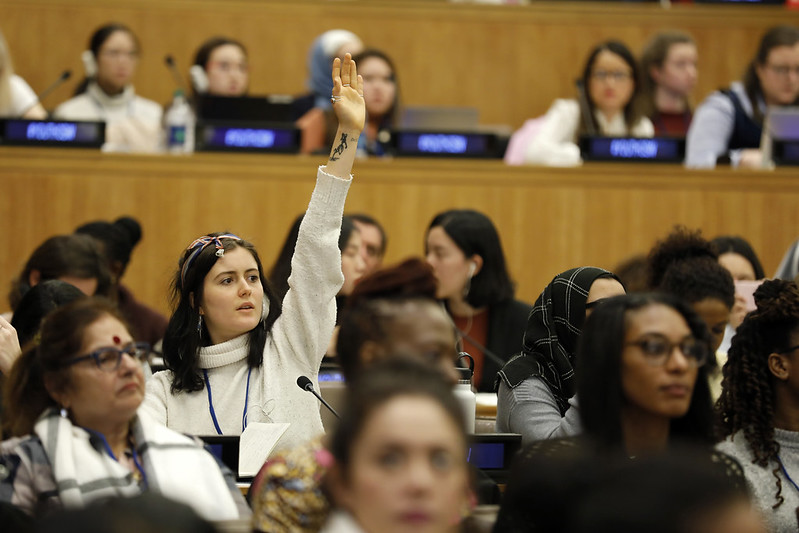As Trump’s tariffs hit Malaysia hard, deeper ties with China seem tempting, but at what cost? With Beijing offering economic lifelines, can Malaysia protect its freedom to choose, or will it find itself trading short-term relief for long-term dependence?
President Xi Jinping’s state visit to Malaysia in April 2025, marking fifty years of Beijing–Kuala Lumpur diplomatic ties, was rich in symbolism, but the true stakes went well beyond ceremony. The visit unfolded amid escalating US-China rivalry and it occurred at a moment of strategic flux: the return of Donald Trump to the White House had reignited tariff wars, slapping Malaysian exports with a punishing 24 percent tariff. For Malaysia, the sudden economic pressure from Washington coincided with Beijing’s open-armed diplomacy, forcing Kuala Lumpur into a delicate strategic recalibration.
Xi’s visit produced tangible outcomes. More than thirty bilateral agreements were signed, spanning fields from artificial intelligence and green technology to upgrades of the East Coast Rail Link (ECRL) and the “Two Countries, Twin Parks” initiative. The extension of visa-free travel underscored the growing people-to-people connections. Most notably, Xi proposed a “2+2” diplomatic and defence dialogue mechanism, signalling China’s ambition for deeper strategic engagement in the region. Yet for all the diplomatic warmth, Xi’s overtures reflect a broader Chinese effort to entrench its influence in Southeast Asia as US credibility wavers.
The Trump administration’s tariff war has accelerated a structural shift. Malaysia’s exports, previously underpinned by robust US market access, now face significant barriers, increasing the appeal of Chinese markets and investments. However, greater economic integration with China carries inherent strategic risks.
Malaysia’s leaders, particularly Prime Minister Anwar Ibrahim, have sought to portray engagement with China as pragmatic, multilateral, and consistent with ASEAN centrality. Yet Xi’s timing, amid Malaysia’s heightened economic vulnerability, cannot be seen as coincidental. China’s growing assertiveness elsewhere in the region, especially in the South China Sea, demands that Malaysia approaches this partnership with strategic caution, not romantic optimism.
More trade, more risk: lessons from the past
Malaysia’s deepening economic ties with China cannot be disentangled from strategic considerations. In 2024, bilateral trade reached a record US$212 billion, with China remaining Malaysia’s largest trading partner for the sixteenth consecutive year. But economic opportunity must not override strategic autonomy. Past missteps offer stark lessons.
Under former Prime Minister Najib Razak, controversial projects like the ECRL raised alarm over debt and opacity. These worries were partly allayed after a 2019 renegotiation under Mahathir Mohamad’s government, which reduced the project’s cost by nearly 30 percent and revised its ownership structure; a move Mahathir described as a step toward easing “debt-trap” anxieties.
Meanwhile, cautionary tales abound in the region. Both Sri Lanka and Laos serve as classical examples of so-called “debt-trap diplomacy.” Sri Lanka’s inability to repay Chinese loans led to a 99-year lease of the Hambantota Port, effectively surrendering control of a strategic national asset. Similarly, Laos has ceded aspects of its energy infrastructure and strategic electricity grid after entering into unfavourable debt arrangements. In both cases, initial cooperation masked deep vulnerabilities that, once exposed, compromised national autonomy.
Malaysia must remain alert. As Chinese investment expands into sectors like port management, AI and logistics, maintaining regulatory oversight and ensuring transparency is essential. Once sovereignty is eroded through coercive leverage, it is rarely reclaimed.
The formation of Malaysia’s Geoeconomics Command Centre Committee indicates growing recognition of these structural risks. Tasked with aligning trade and foreign policy to shifting global dynamics, it reflects Putrajaya’s intent to manage external dependencies before they become liabilities.
Holding the line at sea: sovereignty under pressure
Even as economic cooperation deepens, maritime sovereignty remains a fault line. Beijing’s expansive “nine-dash line” claim, already ruled invalid by the 2016 Hague Tribunal, continues to put pressure on Southeast Asian states. Malaysia’s formal rejection of the claim has been consistent. But tensions are sharpening, especially at Luconia Shoals.
Situated well within Malaysia’s Exclusive Economic Zone, the Luconia Shoals are critical for energy security, and home to oil and gas fields operated by PETRONAS (Malaysia’s state-owned oil and gas company). Yet despite Malaysia’s sovereign claim, China Coast Guard patrols continue unabated. Leaked protest notes and ongoing incursions underscore how strategic pressure is intensifying even as diplomatic ties deepen.
Prime Minister Anwar Ibrahim has publicly stated Malaysia has “no problems” with China. But this cautious diplomatic tone contrasts with the growing frequency of Chinese maritime activity. Sovereignty, however, is not defended with statements alone. The case of Pedra Branca, where Malaysia lost a sovereignty claim due to a lack of demonstrable state activity, illustrates the danger of passive diplomacy. Similarly, past victories like Malaysia’s International Court of Justice win over Ligitan and Sipadan were rooted in consistent administrative practice and enforcement.
By comparison, Indonesia under President Prabowo Subianto has taken a noticeably firmer approach. Recent confrontations between Indonesian patrol forces and Chinese vessels near the Natuna Islands, projected a clear message: Jakarta will not compromise on territorial integrity.
As Malaysia assumes the ASEAN Chairmanship in 2025, its ability to credibly advocate for a rules-based maritime order will depend on translating diplomatic language into visible actions at sea. The Code of Conduct negotiations present a key moment. Malaysia must ensure that ASEAN’s framework defends the rights of claimant states under the United Nations Convention on the Law of the Sea (UNCLOS) and not fall prey to compromises that legitimise China’s excessive claims.
Balancing acts in an unbalanced world
Malaysia’s balancing act is increasingly precarious. Trump’s tariffs have pushed Kuala Lumpur closer to Beijing, but Xi’s embrace presents its own strategic dilemmas. While deepening trade and investment is practical, Malaysia must guard against slipping into structural dependence on any single power.
The immediate task is to pursue principled engagement: accepting investments that serve national interests, defending maritime and sovereign rights without hesitation, and strengthening ties with diverse partners, including the United States, Australia, Japan, and Europe.
Leading ASEAN will require more than diplomatic hosting. Malaysia must model leadership that reinforces pragmatism without sacrificing independence and defend smaller states from being left exposed in a fragmented Indo-Pacific.
Conclusion: economic growth without strategic surrender
Xi Jinping’s visit showcased both the opportunities and the perils of deeper engagement with China. Malaysia’s challenge is not just to attract investment or manage diplomatic relations, but to defend its sovereignty and strategic autonomy in an era of great power rivalry.
As ASEAN Chair in 2025, Malaysia has an opportunity to demonstrate that middle powers can shape, not simply react to, regional dynamics. It is not growth or trade numbers that will define Malaysia’s success, but its commitment to safeguarding a resilient and lawful Southeast Asia.
In a world increasingly shaped by shifting allegiances and contested rules, Malaysia’s future will depend not on passivity, but on confident, principled engagement, ensuring that the benefits of partnership never come at the cost of sovereignty.
Mohd Amirul Asraf Bin Othman is a Malaysian Ph.D student in Political Science and International Relations at the Centre for Arab and Islamic Studies at the Australian National University. His research focuses on Middle East security, regionalism, terrorism, and extremism, within the context of Middle East politics and international relations.
This article is published under a Creative Commons License and may be republished with attribution.




